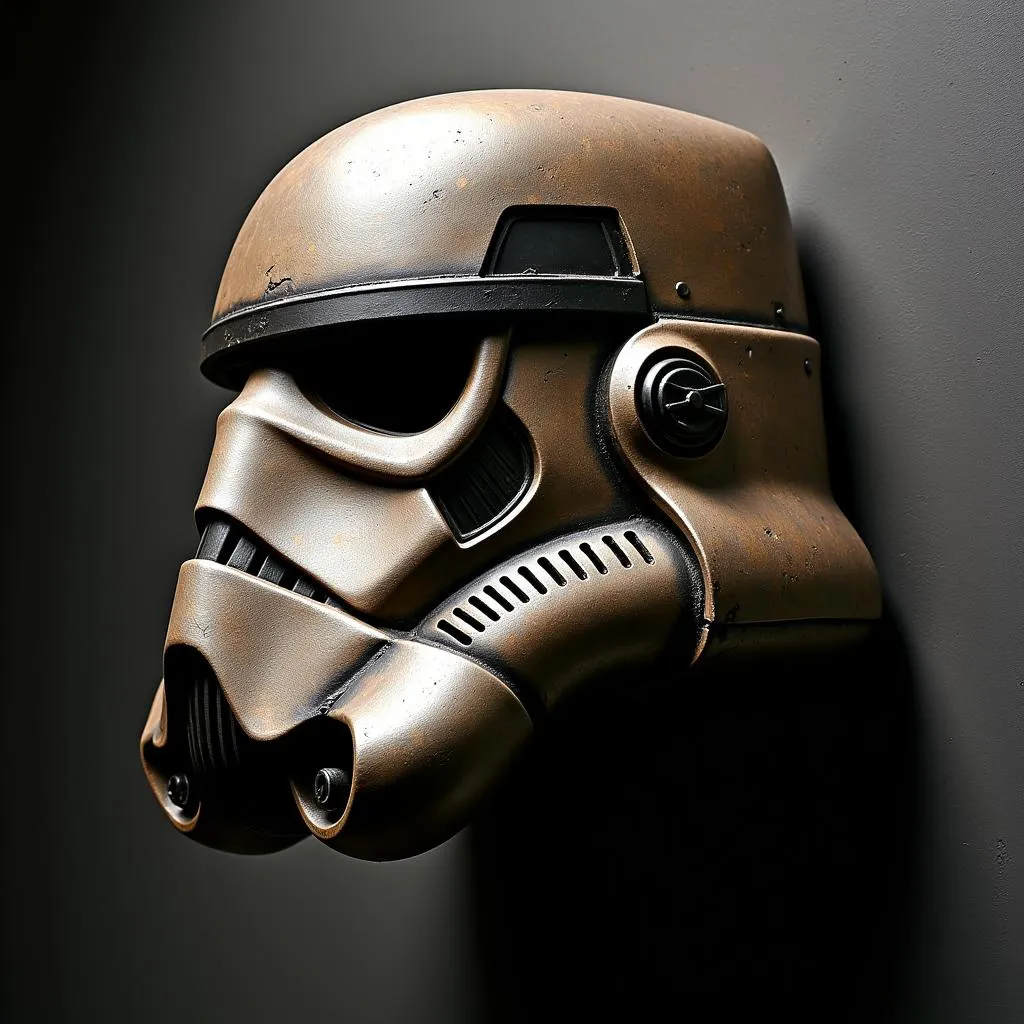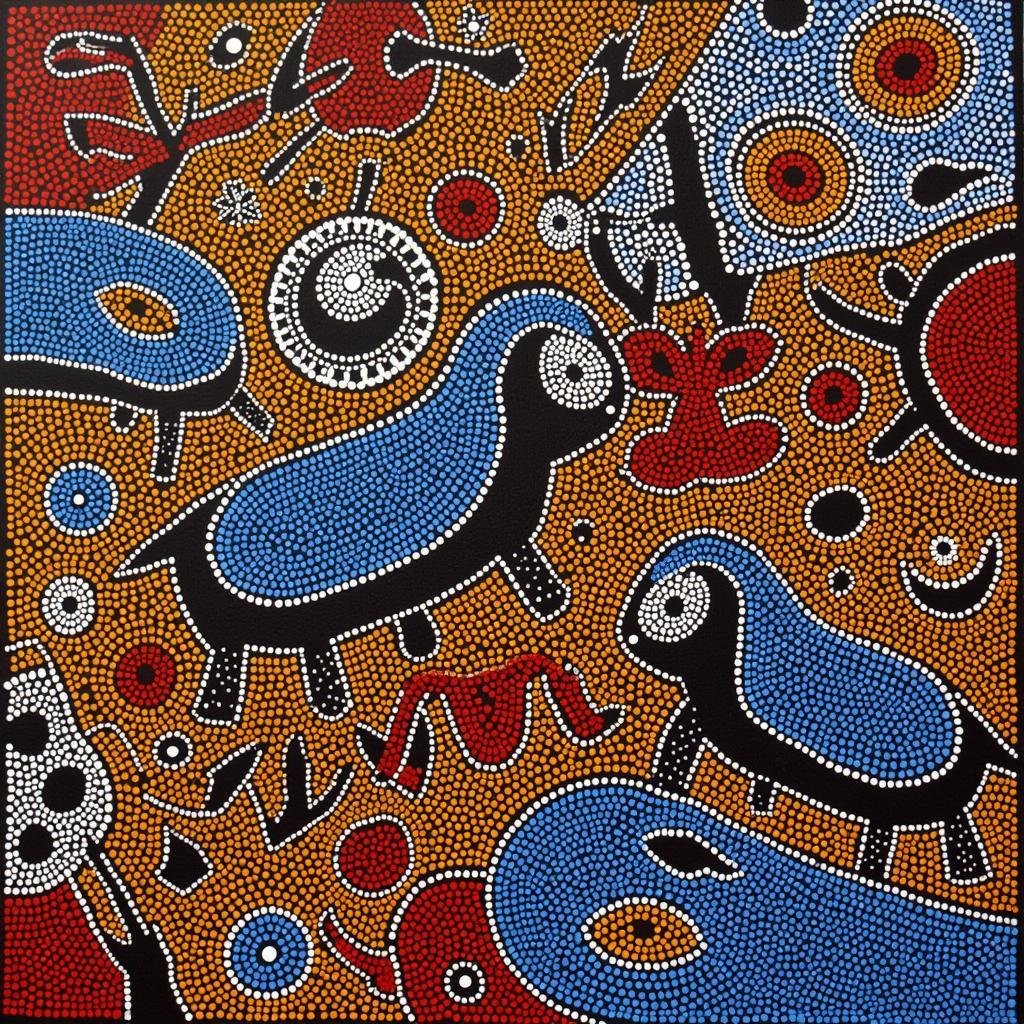Exploring the Iconic Diamond Dogs Album Art
David Bowie’s Diamond Dogs album cover, released in 1974, is arguably one of the most recognizable and controversial pieces of album art in rock and roll history. It features a disturbing, yet compelling, image of Bowie as a half-man, half-dog creature, painted by Belgian artist Guy Peellaert. This striking imagery perfectly captures the dystopian themes present within the album, sparking conversations and interpretations that continue to this day. Let’s delve into the fascinating history and lasting impact of the Diamond Dogs album art.
The Dystopian World of Diamond Dogs Album Art
The album’s artwork reflects the post-apocalyptic, urban decay setting of the Diamond Dogs narrative, a world inspired by George Orwell’s Nineteen Eighty-Four. Peellaert’s painting showcases a grotesque yet strangely beautiful depiction of Bowie’s character, Halloween Jack, against a backdrop of a crumbling city. This visual representation of a broken society resonates with the album’s musical themes of social unrest, control, and the struggle for survival.
The original artwork included fully visible dog genitalia, which was quickly airbrushed out by RCA Records before the album’s release. This censorship only added to the mystique and notoriety of the cover, making it a highly sought-after collector’s item for fans of Bowie and album art enthusiasts alike. The controversy surrounding the censored genitalia speaks volumes about the societal anxieties and taboos of the time.
 Diamond Dogs Album Cover Censored Version
Diamond Dogs Album Cover Censored Version
Deconstructing the Symbolism in David Bowie’s Diamond Dogs Art
The half-man, half-dog figure isn’t just a shocking visual; it’s laden with symbolism. The canine features can be interpreted as representing primal instincts, savagery, and the breakdown of societal norms in a post-apocalyptic world. Bowie’s androgynous portrayal further blurs the lines of identity, suggesting a fluid and uncertain future. The decaying urban landscape in the background reinforces the album’s dystopian themes.
Beyond the central figure, the overall composition and color palette of the artwork contribute to its unsettling atmosphere. The muted tones and stark contrasts create a sense of unease and decay. The use of perspective draws the viewer into the desolate world, inviting them to contemplate the album’s message.
The Lasting Legacy of the Diamond Dogs Album Cover
The Diamond Dogs album art transcends its initial shock value. It has become an iconic image in popular culture, referenced and reinterpreted in various forms of media. Its influence can be seen in fashion, graphic design, and even other musical album covers. The artwork solidified Bowie’s status as a visual artist and innovator, pushing the boundaries of what album art could be.
- Impact on Music and Art: The album’s bold imagery inspired other artists to explore dystopian themes and challenge conventional aesthetics.
- Collectible Value: Original prints of the uncensored artwork are highly valuable, reflecting its historical and cultural significance.
- Cultural Impact: The Diamond Dogs cover remains a powerful symbol of societal anxieties and the enduring power of artistic expression.
“The Diamond Dogs cover is a powerful testament to the ability of art to capture the zeitgeist of a particular moment in time,” says Dr. Anya Sharma, art historian and Bowie scholar. “It’s a visual masterpiece that continues to resonate with audiences today.”
What does the Diamond Dogs album cover depict?
The cover depicts David Bowie as a half-man, half-dog creature in a dystopian urban setting.
Who created the Diamond Dogs album art?
Belgian artist Guy Peellaert created the artwork.
Why was the Diamond Dogs album cover controversial?
The original artwork featured visible dog genitalia, which was censored before release.
 Diamond Dogs Album Art Legacy and Influence
Diamond Dogs Album Art Legacy and Influence
Conclusion
The Diamond Dogs album art remains a controversial yet undeniably impactful piece of visual art. It perfectly encapsulates the dystopian themes of the album and solidifies Bowie’s place as a visionary artist. Its legacy continues to inspire and provoke discussion, making it a timeless piece of rock and roll history.
FAQ
- What inspired the Diamond Dogs album art? George Orwell’s Nineteen Eighty-Four and the post-apocalyptic genre.
- Why is the original artwork so valuable? Due to the censorship of the dog genitalia, making it a rare collector’s item.
- What is the significance of the half-man, half-dog figure? It represents the breakdown of societal norms and primal instincts in a dystopian world.
- Who painted the Diamond Dogs cover? Guy Peellaert.
- What is the overall tone of the artwork? Dystopian, unsettling, and grotesque, yet strangely beautiful.
- How has the Diamond Dogs album art influenced other media? It’s been referenced and reinterpreted in fashion, graphic design, and other album covers.
- Where can I learn more about the making of the album art? Numerous books and articles explore the creation and impact of the Diamond Dogs cover.
For further assistance, please contact Phone Number: 02462573573, Email: [email protected] Or visit us at Savico Megamall, 7-9 Đ. Nguyễn Văn Linh, Gia Thụy, Long Biên, Hà Nội 10000, Việt Nam. We have a 24/7 customer support team.


